|
Books Should Be Free Loyal Books Free Public Domain Audiobooks & eBook Downloads |
|
|
Books Should Be Free Loyal Books Free Public Domain Audiobooks & eBook Downloads |
|
Dramatic Works |
|---|
Book type:
Sort by:
View by:
|
By: Aristophanes (446-389 BCE) | |
|---|---|
 Clouds
Clouds
Strepsiades is an Athenian burdened with debt from a bad marriage and a spendthrift son. He resolves to go to the Thinking Shop, where he can purchase lessons from the famous Socrates in ways to manipulate language in order to outwit his creditors in court. Socrates, represented as a cunning, manipulative, irreverent sophist, has little success with the dull-witted Strepsiades, but is able to teach the old man's son Phidippides a few tricks. In the end, the play is a cynical, clever commentary on Old Ways vs. New Ways, to the disparagement of the former. | |
By: Charlotte M Brame (1836-1884) | |
|---|---|
 Shadow of a Sin
Shadow of a Sin
A story of a young woman in love and the sacrifices she makes in order to save a man's life when he is accused of murder. Has she gone too far and risked too much? Will she ever find happiness again, or is she destined to live a life of secrecy? | |
By: Euripides (484 BC - 406 BC) | |
|---|---|
 Orestes
Orestes
In accordance with the advice of the god Apollo, Orestes has killed his mother Clytemnestra to avenge the death of his father Agamemnon at her hands. Despite Apollo’s earlier prophecy, Orestes finds himself tormented by Erinyes or Furies to the blood guilt stemming from his matricide. The only person capable of calming Orestes down from his madness is his sister Electra. To complicate matters further, a leading political faction of Argos wants to put Orestes to death for the murder. Orestes’ only hope to save his life lies in his uncle Menelaus, who has returned with Helen after spending ten years in Troy and several more years amassing wealth in Egypt... | |
By: John Bunyan (1628-1688) | |
|---|---|
 Pilgrim's Progress (version 3)
Pilgrim's Progress (version 3)
Probably the most famous allegory ever written of the Christian life, The Pilgrim's Progress follows the journey of Christian from his first encounter with the Evangelist, through his trials and doubts and as he meets various people who help and hinder him in his journey towards the Celestial City to meet his King. Part 2 follows the journey of Christian's wife and sons as they follow him along the same path past the Slough of Despond, the Castle Despair and Vanity Fair. This version was edited in 1909 by the Rev... | |
By: John Ford (1586-1639) | |
|---|---|
 'Tis Pity She's a Whore
'Tis Pity She's a Whore
One of the most shocking plays produced in England during the reign of Charles I, 'Tis Pity She's A Whore chronicles the disastrous results of an incestuous affair between fatalistic Italian siblings, Giovanni and Annabella. As suitors vie for Annabella's hand, various webs of deception and revenge intertwine, culminating in a bloody finale. CAST LISTBonaventura, a Friar/ Bergetto, Nephew to Donado: alanmapstoneA Cardinal, Nuncio to the Pope AND Banditti: Algy PugSoranzo, a Nobleman: tovarischFlorio,... | |
By: Maria Thompson Daviess (1872-1924) | |
|---|---|
 Heart's Kingdom
Heart's Kingdom
Nickols Powers is in love with the beautiful Charlotte and desperate to marry her. Charlotte however, is independent and reluctant to accept his religious views as a good wife should. However, she may still be convinced by the charismatic preacher building a new church in her own backyard. | |
By: Mary Ella Lyng | |
|---|---|
 History Plays for the Grammar Grades
History Plays for the Grammar Grades
A charming collection of 14 short American history plays for the very young - ranging from Christopher Columbus to George Washington to Susan B Anthony. | |
By: Robert G. Ingersoll (1833-1899) | |
|---|---|
 Selected Interviews with Robert G. Ingersoll, Volume 1
Selected Interviews with Robert G. Ingersoll, Volume 1
A controversial lecturer, brilliant lawyer, and arguably the most famous orator of the mid to late 1800's, Ingersoll railed against the absurdities of the Bible and cruelties of Christianity, particularly the horrific notion of "eternal damnation". He tirelessly supported the arts, education, science, women’s rights, abolition, home, family, children, and human liberty. As a leader of the Freethought movement, his creed was: “Happiness is the only good, Reason the only torch, Justice the only worship, Humanity the only religion, and Love the only priest... | |
By: Various | |
|---|---|
 One-Act Play Collection 005
One-Act Play Collection 005
This collection of ten one-act dramas features plays by James M. Barrie, Hereward Carrington, Marjorie Benton Cooke, Alice Gerstenberg, Susan Glaspell and George Cram Cook, St. John Hankin, George Middleton, David Pinski, Frederik Pohl, and an unknown Japanese author. The plays were coordinated by Arielle Lipshaw, Availle, Chuck Williamson, Todd, Peter Yearsley, Caprisha Page, Charlotte Duckett, and Amanda Friday. | |
 Dramatic Reading Scene and Story Collection, Volume 001
Dramatic Reading Scene and Story Collection, Volume 001
readers present a collection of their favorite chapters and short stories, with the original author’s words all brought to life with different reader voices for each character in our popular Dramatic Reading style. This volume includes Anne's Confession from Anne of Green Gables by Lucy Maud Montgomery, Coming Home from Mates of Billabong by Mary Grant Bruce [not PD in Australia or Europe], Scandal in Bohemia from The Adventures of Sherlock Holmes by Sir Arthur Conan Doyle, The Tunnel Under the... | |
By: Aeschylus (525/524 BC - c. 455/456 BC) | |
|---|---|
 The Oresteia
The Oresteia
The Oresteia is a trilogy by Aeschylus, one of the foremost playwrights of ancient Greece. It encompasses three plays: Agamemnon, The Libation Bearers, and The Furies. It tells the tragic tale of the House of Atreus, whose inhabitants have been cursed and are doomed to play out their bloody, vengeful destinies. At the beginning of the first part, the Trojan War has ended and the Greek general, Agamemnon, is returning victorious to his wife Clytemnestra. Yet she finds it difficult to forgive his sacrifice of their daughter, Iphigenia, who was killed to ensure the Greek fleet fair winds in their voyage to Troy... | |
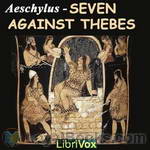 Seven Against Thebes
Seven Against Thebes
In this, the only extant tragedy from Aeschylus' trilogy about the House of Oedipus, Thebes is under siege from Polynices, a former prince of Thebes. After King Oedipus left his city and cursed the princes, Polynices and his brother, Eteocles, decided to rule alternately, switching at the end of every year. However, at the end of his year as king, Eteocles refused to turn power over to his brother and exiled him, fulfilling his father's curse that the two brothers could not rule peacefully. In the action of the play, Polynices and a group of Argive soldiers are attacking Thebes so that he can take his place as ruler... | |
By: Alexandre Dumas (1802-1870) | |
|---|---|
 Catherine Howard (Dramatic Reading)
Catherine Howard (Dramatic Reading)
Subtitled "The Throne, The Tomb, and The Scaffold - An Historical Play in 3 Acts From the Celebrated Play of that Name by Alexandre Dumas" - How can you resist a play about English history - the doomed fifth wife of Henry the 8th - by the celebrated French author of The Musketeers?? - Summary by ToddHW Cast list: Henry VIII, King of England: Larry Wilson Athelwold, Duke of Northumberland: Paul Simonin Archbishop Cranmer: alanmapstone Duke of Sussex: KHand Duke of Norfolk: tovarisch Grand Chamberlain:... | |
By: Alfred Noyes (1880-1958) | |
|---|---|
 Rada; A Belgian Christmas Eve
Rada; A Belgian Christmas Eve
This is not heart warming holiday fare. It is a short (one-act) unsubtle antiwar play by the English poet Alfred Noyes (1880-1958), published in 1915 while World War I is in progress. Part of the work is in verse. Music sung by Duane Steadman. | |
By: Amelia E. Barr (1831-1919) | |
|---|---|
 Maid of Maiden Lane
Maid of Maiden Lane
The Maid of Maiden lane is a wonderful love story in which Mrs. Barr intertwines the hot political and social issues that were occurring in America during the last decade of the 18th century with an excellent love story plot. Some of those issues include: the moral dilemma and debate over the French Revolution, and how that event touched the lives of the immigrants in America; the prejudices between the immigrants from England, and those from France or Holland, and how those animosities affected the ordinary lives of the people; and the political debate over titles, foreign policy, and such things(for example)as where the capital of the nation was to reside, New York or Philadelphia... | |
By: Amice MacDonell | |
|---|---|
 Saxon and Norman
Saxon and Norman
Edward the Confessor is very weak and will die soon. But with no son to succeed him, who will gain the throne? The common folk and loyal Saxon barons in England want Harold, while the Norman barons and the people in Normandy, France want Duke William. They claim Edward gave William the throne. Who is right? Will Britain be Normanized? - Summary by Esther ben Simonides Cast List King Edward the Confessor: Beth ThomasHarold, Earl of Wessex: Adele de PignerollesGyrth, brother to Harold; Cecilia, daughter... | |
By: Anna Cora Mowatt Ritchie (1819-1870) | |
|---|---|
 Armand; or The Peer and The Peasant
Armand; or The Peer and The Peasant
Although almost completely obscure today, this romantic melodrama was arguably a bigger hit for actress/playwright Anna Cora Mowatt than her theatre history-making comedy “Fashion” Wisely cashing in on the craze for settings and characters made popular by Alexander Dumas’ “Musketeer” novels still being published in serial form when the play debuted, this drama focuses on the adventures of sweet, beautiful, peasant maiden Blanche, who discovers she may be the illegitimate daughter of the scheming Duke de Richelieu... | |
By: Anna Sewell | |
|---|---|
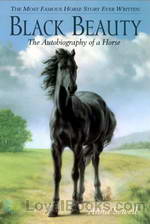 Black Beauty
Black Beauty
This unique tale is narrated by a lovely, gentle horse named Black Beauty and has remained a children's classic since it was first published in 1877. It earned eternal name and fame for its author Anna Sewell, an invalid who died within a few months of publication. According to current estimates, it has sold more than fifty million copies world wide, been translated into many languages and delighted generations of children. The original title page reads: Black Beauty: Translated from the original Equine by Anna Sewell and this gives the reader an instant glimpse into what the book will be about... | |
By: Anthony Munday (1560? -1633) | |
|---|---|
 Sir Thomas More
Sir Thomas More
Sir Thomas More is a collaborative Elizabethan play by Anthony Munday and others depicting the life and death of Thomas More. It survives only in a single manuscript, now owned by the British Library. The manuscript is notable because three pages of it are considered to be in the hand of William Shakespeare and for the light it sheds on the collaborative nature of Elizabethan drama and the theatrical censorship of the era. The play dramatizes events in More's life, both real and legendary, in an episodic manner in 17 scenes, unified only by the rise and fall of More's fortunes. | |
By: Anton Chekhov (1860-1904) | |
|---|---|
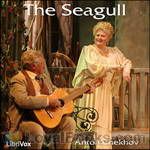 The Seagull
The Seagull
The Seagull (Russian: Чайка, Chayka) is the first of what are generally considered to be the four major plays by the Russian dramatist Anton Chekhov. The play was written in 1895 and first produced in 1896. It dramatises the romantic and artistic conflicts between four characters: the ingenue Nina, the fading leading lady Irina Arkadina, her son the experimental playwright Konstantin Treplyov, and the famous middlebrow story writer Trigorin. | |
 The Cherry Orchard
The Cherry Orchard
The Cherry Orchard is Russian playwright Anton Chekhov's last play. It premiered at the Moscow Art Theatre 17 January 1904 in a production directed by Constantin Stanislavski. Chekhov intended this play as a comedy and it does contain some elements of farce; however, Stanislavski insisted on directing the play as a tragedy. Since this initial production, directors have had to contend with the dual nature of this play. The play concerns an aristocratic Russian woman and her family as they return to the family's estate (which includes a large and well-known cherry orchard) just before it is auctioned to pay the mortgage... | |
 Uncle Vanya
Uncle Vanya
Uncle Vanya (subtitled “Scenes From Country Life”) is a tragicomedy by Anton Chekhov. It is set on the failing country estate of a retired professor, Serebrakoff, who returns after a long absence with his beautiful young wife, and throws the household into confusion. Rivalry, unrequited love, illicit romance, and attempted suicide are the result, punctuated throughout by Chekhov’s sad, wistful humor. | |
 Swan Song
Swan Song
In 'The Swan Song' an aging actor reminisces about his life and the parts he's played. The piece takes a tragic look at ambition and the sacrifices that must be made in order to succeed. Chekhov’s ability to capture and explore human nature and experience is showcased here. | |
 Ivanov
Ivanov
Nicolai (anglicised Nicholas in this translation) Ivanov, a middle-aged public servant, is unhappy. His wife Anna, disinherited by her family after converting from Judaism, is dying of tuberculosis. He is deeply in debt. And his best friend’s daughter is infatuated with him. Comedy and tragedy ensue in truly Chekhovian fashion. An example of the young Chekhov’s maturing style, Ivanov is an early harbinger of themes that would recur throughout his work. | |
By: Aristophanes (446BC - 385BC) | |
|---|---|
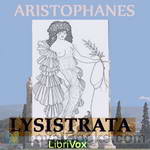 Lysistrata
Lysistrata
Lysistrata read by the Classics Drama Company at DePaul. The Classics Drama Company at DePaul is a new gathering of Thespians and Classicists dedicated to performing and understanding ancient literature. If you live in Chicago and attend DePaul University, we welcome new additions to our group. Contact Dr. Kirk Shellko (kshellko@depaul.edu), if interested.First performed in classical Athens c. 411 B.C.E., Aristophanes’ Lysistrata is the original battle of the sexes. One woman, Lysistrata, brings together the women of all Greece, exhorting them to withhold sexual contact from all men in order that they negotiate a treaty... | |
By: Arthur Wing Pinero (1855-1934) | |
|---|---|
 The Amazons: A Farcical Romance
The Amazons: A Farcical Romance
This 1895 farce inspired by the outlandish idea of women wearing pants, centers around the predicament of the three daughters of the eccentric Marchioness of Castlejordan, who determined to have sons, raised them like boys. She encouraged them to dress and act like boys at home, yet dress like ladies when out. As the girls come of age, they are conflicted. They want to please mother by acting as her sons, but, suddenly smitten with three gentlemen, they are compelled to grow up and be ladies. When their suitors secretly come to woo, they aren’t sure what to do……and what will mother do if she finds out? | |
 Letty
Letty
Letty is another one of Pinero's Social Plays, exposing the double standard of woman's reputations suffering for actions that in men were not only allowed, but even expected. Letty is a romantic shop assistant who considers bettering her station in life with a marriage to her employer. This play was filmed as a silent movie in 1919 as The Loves of Letty. - Summary by ToddHW Cast list: Nevill Letchmere: Tomas Peter Ivor Crosbie: Andrew Gaunce Coppinger Drake: artvo88 Bernard Mandeville: Alan Mapstone Richard Perry: ToddHW Neale, a Commercial Traveller: JoeBer Ordish, Agent for an Insurance Company: Greg Giordano Rugg, Mr... | |
 Iris
Iris
Left a widow 5 years ago at age 21, Iris Bellamy is shackled by terms of her husband's will that would leave her penniless if she remarries. Of course, "if she married a rich man, her interest in her late husband's estate would be no longer indispensible to her." But "rich men generally have some odious quality to counterbalance their wealth. The men one would marry are as poor as mice." So what do you think is likely to happen? - Summary by ToddHW Cast list: Frederick Maldonado: Adrian Stephens Laurence Trenwith: Tomas Peter Croker Harrington: ToddHW Archibald Kane: Alan Mapstone Colonel Wynning: Algy Pug Servant at Mrs... | |
By: August Strindberg (1849-1912) | |
|---|---|
 Countess Julie
Countess Julie
August Strindberg’s naturalistic one-act drama has only three characters: Julie, a passionate young noblewoman; Jean, her father’s ambitious valet; and Kristin, the cook, who is also Jean’s fiancee. The play is set on Midsummer Eve, when everyone is reveling, and Julie and Jean get a bit too intimate – with tragic results. | |
 Creditors
Creditors
Creditors is an 1889 tragicomedy by August Strindberg that plumbs the depths of the twisted triangular relationship between Tekla, her husband Adolph, and her ex-husband Gustav. | |
 The Ghost Sonata
The Ghost Sonata
The Ghost Sonata (Spoksonaten) is a play in three acts by Swedish playwright August Strindberg. Written in 1907, it was first produced at Strindberg's Intimate Theatre in Stockholm on 21 January 1908... The Ghost Sonata is a key text in the development of modernist drama and a vivid example of a chamber play. In it, Strindberg creates a world in which ghosts walk in bright daylight, a beautiful woman is transformed into a mummy and lives in the closet, and the household cook sucks all the nourishment out of the food before she serves it to her masters... | |
 There are Crimes and Crimes
There are Crimes and Crimes
| |
 Dream Play
Dream Play
A Dream Play (Swedish: Ett drömspel) was written in 1901 by the Swedish playwright August Strindberg. It was first performed in Stockholm on 17 April 1907. It remains one of Strindberg's most admired and influential dramas, seen as an important precursor to both dramatic Expressionism and Surrealism. The primary character in the play is Agnes, a daughter of the Vedic god Indra. She descends to Earth to bear witness to problems of human beings. She meets about 40 characters, some of them having a clearly symbolical value (such as four deans representing theology, philosophy, medicine, and law)... | |
By: August von Kotzebue (1761-1819) | |
|---|---|
 Lover's Vows
Lover's Vows
Lovers' Vows (1798), a play by Elizabeth Inchbald arguably best known now for having been featured in Jane Austen's novel Mansfield Park (1814), is one of at least four adaptations of August von Kotzebue's Das Kind der Liebe (1780; literally "Child of Love," or "Natural Son," as it is often translated), all of which were published between 1798 and 1800. Inchbald's version is the only one to have been performed. Dealing as it does with sex outside marriage and illegitimate birth, Inchbald in the Preface to the published version declares herself to have been highly sensitive to the task of adapting the original German text for "an English audience... | |
By: B. F. Gandee | |
|---|---|
 Artist
Artist
The Artist, or Young Ladies' Instructor in Ornamental Painting, Drawing etc. is a delightful art instruction book from 1835. Follow Charlotte as she teaches her cousin Ellen a range of art forms that were widely taught at the time, from painting in the Grecian and Japanese style, to Oriental and Mezzotinting, as well as Inlaying. A few simple projects with paper are mentioned at the end of the book. - Summary by Ava Cast: Mamma read by LCaulkins Ellen read by MrsHand Charlotte read by Availle Narration and Preface and Epilogue by ToddHW | |
By: Baroness Orczy (1865-1947) | |
|---|---|
 Triumph of the Scarlet Pimpernel (Dramatic Reading)
Triumph of the Scarlet Pimpernel (Dramatic Reading)
The last of the famous "Scarlet Pimpernel" books, the "Triumph" tells the story of the final confrontation between the Scarlet Pimpernel and his nemesis, Chauvelin. Set at the end of the Reign of Terror, the fortunes of all rise and fall along with the French Revolutionary government. | |
By: Beatrix Potter (1866-1943) | |
|---|---|
 Collection of Beatrix Potter Stories
Collection of Beatrix Potter Stories
What can we say about the delightful Beatrix Potter stories? Starting with the naughty Peter Rabbit and his mis-adventures, progressing through The Tale of Mrs. Tiggy-Winkle whose funny name is just the start of the interesting things about her, then expounding on the Tale of Jemima Puddle-Duck, and many many more, these stories are all gems of the art of story telling. This is your chance to enjoy reading them aloud and recording them for children to enjoy listening to in the years and decades to come. Aren't you curious to learn more about the Fierce Bad Rabbit? Or the Tale of the Two Bad Mice? This is your chance to read aloud. And remember to have fun !! | |
By: Ben Jonson (1572-1637) | |
|---|---|
 The Alchemist
The Alchemist
An outbreak of plague in London forces a gentleman, Lovewit, to flee temporarily to the country, leaving his house under the sole charge of his butler, Jeremy. Jeremy uses the opportunity given to him to use the house as the headquarters for fraudulent acts. He transforms himself into 'Captain Face', and enlists the aid of Subtle, a fellow conman and Dol Common, a prostitute. In The Alchemist, Jonson unashamedly satirizes the follies, vanities and vices of mankind, most notably greed-induced credulity... | |
By: Burt L. Standish (1866-1945) | |
|---|---|
 Frank Merriwell’s Trust (Dramatic Reading)
Frank Merriwell’s Trust (Dramatic Reading)
Frank Merriwell is from Yale he excelled at football, baseball, basketball, crew and track at Yale while solving mysteries and righting wrongs the stories show how he handles a number of challenges that come his way. Cast List:Frank Merriwell: Adrian StephensNarrator: Michele EatonBullet headed man, Crowd, McGilvay, Franks second: John PaytonTom Stevens: Jake MaliziaHilda Dugan: Jenn BrodaHarry Collins, Irish Man, Gray Mustached man, policeman, Jones, Bartender, trainman, servant of Alvin Brander:... | |
By: Carey Rockwell | |
|---|---|
 Danger in Deep Space (Dramatic Reading)
Danger in Deep Space (Dramatic Reading)
The year is 2353. Tom Corbett is a cadet with the Space Academy, training to become a member of the elite Solar Guard. Sent on a top-secret mission across the stars, Tom and his fellow crew members discover the nature of true loyalty, as they battle against danger in deep space. | |
By: Charles Dickens (1812-1870) | |
|---|---|
 The Strange Gentleman
The Strange Gentleman
Before he became a novelist, Dickens wrote several successful plays. This one from 1836, his first, he called, "A Comic Burletta in Two Acts". Characters arrive at a village inn called "The St. James Arms" and much confusion ensues. | |
 Oliver Twist (version 5 Dramatic Reading)
Oliver Twist (version 5 Dramatic Reading)
When orphaned Oliver Twist asks for more food, the workhouse board are horrified and immediately pack him off to work for an undertaker, who treats him badly. Oliver runs away and finds himself in the streets of London, where he meets the Artful Dodger and is lured into a gang of young pickpockets, led by the evil Fagin. Even amidst his horrible surroundings, Oliver escapes and finds his way into a loving home. But Fagin's gang are determined to steal him back to their life of crime, coming closer and closer... | |
By: Charles Goddard (1879-1951) | |
|---|---|
 The Perils of Pauline
The Perils of Pauline
The Perils of Pauline is one of the first damsel in distress serials. The story is complete with undaunted hero, courageous damsel, unscrupulous villains galore, and other worldly interest. Before getting married, Pauline wants to experience the world and have adventures. When her guardian dies and leaves her an estate in trust of his secretary, adventures suddenly become more hazardous. Pauline charters aeroplanes, meets untrustworthy pirates, braves dangerous China Town, flies in a hot air balloon, adventures in the Wild West, encounters international spies, and escapes many other perils with the aid of her would-be fiancé, Harry, and an Egyptian mummy. | |
By: Charles Goddard and Paul Dicky | |
|---|---|
 The Ghost Breaker
The Ghost Breaker
The Ghost Breaker is a drama and haunted house horror complete with heroes, villains, and a Princess. The Ghost Breaker was originally a screenplay and would later be made a drama film directed by Cecil B. DeMille. | |
By: Charles Lamb | |
|---|---|
 Mr. H
Mr. H
Mr H is a farce that was first performed at Drury Lane in 1806. The plot is slender and revolves around a single rather feeble joke, but the characters are skilfully drawn and the sharp observations of contemporary fashion do much to divert the listener from the weakness of the central theme. More a comedy of manners rather than a true farce, this short play is best enjoyed as a gentle romp through the eccentricities of the Regency period. | |
By: Charles Monroe Sheldon (1857-1946) | |
|---|---|
 In His Steps
In His Steps
In His Steps takes place in the railroad town of Raymond. The main character is the Rev. Henry Maxwell, pastor of the First Church of Raymond, who challenges his congregation to not do anything for a whole year without first asking: “What Would Jesus Do?” (taken from Wikipedia) | |
 For Christ and the Church (dramatic reading)
For Christ and the Church (dramatic reading)
Rev. Mark Spencer is about to give up on writing his sermon one Saturday night when the Devil comes to him and tries to discourage him by reminding him how few of the people who have pledged themselves to make their motto, 'For Christ and the Church' keep it. The minister decides to preach a sermon like nothing the people in his congregation have ever heard before--a sermon that stirs them to action and to give themselves fully to God. A sermon that urges them to pledge themselves again to Christ and the Church! - Summary by Esther ben SimonidesCast ListRev... | |
By: Charlotte Brontë (1816-1855) | |
|---|---|
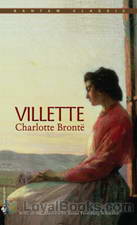 Villette
Villette
Villette was Charlotte Bronte's last published novel. It came out in 1853, just two years before her death in 1855. It is a poignant, strangely lonely and sad work, steeped in conflict between society's demands and personal desires. Set in the fictional town of Villette in France, it is the story of the young and intelligent Lucy Snowe, the narrator in the book. She is described by another character in the book as having “no beauty...no attractive accomplishments...” and strangely seems to lack a personal history or living relatives... | |
By: Charlotte Lennox (1730-1804) | |
|---|---|
 Henrietta Volume 1 (dramatic reading)
Henrietta Volume 1 (dramatic reading)
Henrietta is a strong willed young lady who will not give in to her aunt and marry the suitors she proposes. She runs away and adventure ensues. However she meets one young man who she is quite taken with but he does not share all about himself and Henrietta finds herself in some tricky situations. | |
By: Christopher Marlowe (1564-1593) | |
|---|---|
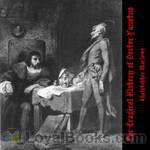 The Tragical History of Doctor Faustus
The Tragical History of Doctor Faustus
The Tragical History of Doctor Faustus, normally known simply as Doctor Faustus, is a play by Christopher Marlowe, based on the Faust story, in which a man sells his soul to the devil for power and knowledge. Doctor Faustus was first published in 1604, eleven years after Marlowe's death and at least twelve years after the first performance of the play. | |
 The Jew of Malta
The Jew of Malta
Christopher “Kit” Marlowe (baptised 26 February 1564 – 30 May 1593) was an English dramatist, poet, and translator of the Elizabethan era. The foremost Elizabethan tragedian before William Shakespeare, he is known for his magnificent blank verse, his overreaching protagonists, and his own untimely death. The Jew of Malta (1589) is an original story of religious conflict, intrigue, and revenge, set against a backdrop of the struggle for supremacy between Spain and the Ottoman Empire in the Mediterranean... | |
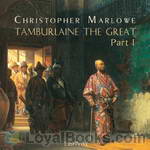 Tamburlaine the Great
Tamburlaine the Great
Tamburlaine the Great is the name of a play in two parts by Christopher Marlowe. It is loosely based on the life of the Central Asian emperor, Timur 'the lame'. Written in 1587 or 1588, the play is a milestone in Elizabethan public drama; it marks a turning away from the clumsy language and loose plotting of the earlier Tudor dramatists, and a new interest in fresh and vivid language, memorable action, and intellectual complexity. Along with Thomas Kyd's The Spanish Tragedy, it may be considered the first popular success of London's public stage... | |
 Tragical History of Doctor Faustus (1616 version)
Tragical History of Doctor Faustus (1616 version)
The Tragicall History of the Life and Death of Doctor Faustus, commonly referred to simply as Doctor Faustus, is a play by Christopher Marlowe, based on the Faust story, in which a man sells his soul to the devil for power and knowledge. Doctor Faustus was first published in 1604, eleven years after Marlowe's death and at least twelve years after the first performance of the play. "No Elizabethan play outside the Shakespeare canon has raised more controversy than Doctor Faustus. There is no agreement concerning the nature of the text and the date of composition... | |
By: Dante Alighieri (1265-1321) | |
|---|---|
 Divine Comedy (version 2 Dramatic Reading)
Divine Comedy (version 2 Dramatic Reading)
The Divine Comedy (in Italian, Divina Commedia, or just La commedia or Comedia) is an epic poem written by Dante Alighieri in the first decades of the 14th Century, during his exile from his native Florence. Considered the most important work of Italian literature, the poem has also has enormous historical influence on western literature and culture more generally. Dante represents the three realms of the afterlife in his three canticles (Inferno--Hell; Purgatorio--Purgatory; Paradiso--Paradise) in a way that reflects and, at the same time, goes beyond Christian tradition of the 14th Century... | |
By: David Belasco (1853-1931) | |
|---|---|
 Return of Peter Grimm
Return of Peter Grimm
| |
By: Deborah Alcock (1835-1913) | |
|---|---|
 Spanish Brothers (Dramatic Reading)
Spanish Brothers (Dramatic Reading)
Juan and Carlos Meñaya have longed to find their father ever since they were little. Their dream starts to get lost, though, as they grow up and go separate ways. Juan goes off to war and falls under the influence of a Huguenot prisoner while Carlos becomes a monk and begins to discover the Bible for himself. - Summary by Adele de Pignerolles Dramatis Personae Narration by Adele de Pignerolles and Rapunzelina Carlos, read by Joseph Tabler Juan Rodrigo, read by Aaron Rivera Dolores, read by Sonia Fray... | |
By: Edith Nesbit (1858-1924) | |
|---|---|
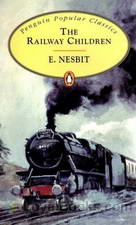 Railway Children
Railway Children
A thrilling spy story, a children's adventure, a charming portrait of early twentieth century life in London and the countryside and a heart warming family tale are all combined in this classic of children's literature The Railway Children by E Nesbit. The book has remained on the list of the best-loved children's books ever since it was first published as a serial story in The London Magazine in 1905. Later, it was published in book form and won acclaim from critics and readers across the world for its wonderful elements of character and plot... | |
 The Phoenix and the Carpet
The Phoenix and the Carpet
The Phoenix and the Carpet is a fantasy novel for children, written in 1904 by E. Nesbit. It is the second in a trilogy of novels that began with Five Children and It (1902), and follows the adventures of the same five protagonists – Cyril, Anthea, Robert, Jane and the Lamb. Their mother buys the children a new carpet to replace the one from the nursery that was destroyed in an unfortunate fire accident. Through a series of exciting events, the children find an egg in the carpet which cracks into a talking Phoenix. The Phoenix explains that the carpet is a magical one that will grant them three wishes per day. | |
 Story of the Amulet
Story of the Amulet
The third of the series featuring Cyril, Anthea, Robert and Jane: four children who are, as they often say, "the sort of people that wonderful things happen to". In 'Five Children and It' they were lucky enough to meet the magical, wish-granting Psammead - and in this final book they meet him once again. He guides them to an ancient Amulet that will help them find their hearts' desire - but it's only half an amulet, and seeking for the other half has them whizzing about through time on another series of amazing adventures. | |
By: Edward Fisher | |
|---|---|
 Marrow of Modern Divinity
Marrow of Modern Divinity
The gospel method of sanctification, as well as of justification, lies so far out of the understanding of natural reason, that if all the rationalists in the world, philosophers and divines, had consulted together to lay down a plan, for repairing the lost image of God in man, they had never hit upon that which the divine wisdom had pitched upon, viz., That sinners should be sanctified in Christ Jesus, 1 Cor. 1:2, by faith in him, Acts 26:18. Nay, being laid before them, they would have rejected it with disdain as foolishness, 1 Cor... | |
By: Edward Sheldon (1886-1946) | |
|---|---|
 Boss
Boss
The Boss centers on the relationship between Michael Regan, an Irish-American businessman, and Emily Griswold, an outspoken American girl bent on saving her father's business. Set during a time when unions fought for wages and bosses fought for more stake in their company, the play's relevance strikes at the heart of economic issues and hardships in modern day America. | |
By: Eleanor H. Porter (1868-1920) | |
|---|---|
 Pollyanna Grows Up
Pollyanna Grows Up
Pollyanna, now cured of her crippling spinal injury, and able to walk again, goes to live in Boston with Mrs. Carew, a heart-broken woman searching for her lost nephew. Aunt Polly goes abroad with Pollyanna’s new Uncle, Dr. Chilton. While in Boston, Pollyanna meets new friends and has several interesting adventures… A startling change in Aunt Polly’s and Pollyanna’s circumstances require Pollyanna to come up with a workable solution. Pollyanna’s solution brings all her new friends from Boston and her old friends in Beldingsville together. Pollyanna also discovers she has to make a choice. Who will win her heart? | |
By: Eleanor Hallowell Abbott (1872-1958) | |
|---|---|
 Rainy Week (Dramatic Reading)
Rainy Week (Dramatic Reading)
Join this couple in their annual house party where the “guests” becoming unknowing “actors” in their beach house play “Rainy Week” . “To be indeed absolutely explicit experience has proved, with an almost chemical accuracy, that, quite regardless of "age, sex, or previous condition of servitude," this particular combination of Romantic Passion, Psychic Austerity, Tragedy, Ambition, Poignancy, Innocence, And Irritation, cannot be housed together for even one Rainy Week without producing drama!” Cast Narrator/Mrs... | |
By: Eliza Armstrong | |
|---|---|
 Teacup Club (Dramatic Reading)
Teacup Club (Dramatic Reading)
The Teacup Club is formed when Dorothy decides to found an intellectual club of her own - to teach her fiance a lesson! The club’s discussion topics includes Theosophy, Politics and Women in Legislature. The club’s unofficial topics include Emily’s new dress, man-flu and the great mystery of the missing chafing-dish. A witty drama and a comedy of manners, secrets and politics . - Summary by Elizabby Cast List: Cast Narrator: Beth Thomas Evelyn: Jennifer Fournier Emily: Leanne Yau Dorothy: KHand Frances: Beth Thomas Elise: Lydia Marion: Vicki Hibbins Catharine: Michele Eaton Edited by: Michele Eaton and linny Proof listeners: Michele Eaton, Beth Thomas | |
By: Elizabeth Barrett Browning (1806-1861) | |
|---|---|
 A Drama of Exile
A Drama of Exile
In writing her ‘Drama of Exile’, Barrett’s subject was ‘the new and strange experience of the fallen humanity, as it went forth from Paradise into the wilderness’. The bizarre, lyrical scenes that follow powerfully describe the grief and guilt of Eve, the sorrowful pride of Lucifer, and the redeeming power of love. | |
By: Elizabeth Klett (1867-1936) | |
|---|---|
 Six Characters in Search of an Author
Six Characters in Search of an Author
Six Characters in Search of an Author (Sei personaggi in cerca d’autore) is the most famous and celebrated play by the Italian writer Luigi Pirandello. Pirandello, in the preface to the play, says that whenever a reader opens Dante’s Inferno, Francesca will drift down from the dark wind in her circle of Hell and tell the Pilgrim her story; and it will always be for the first time – just as the Mother in Pirandello’s play at one point makes an agonizing cry, always for the first time. Each character sees events and the other characters differently... | |
By: Eugene O'Neill | |
|---|---|
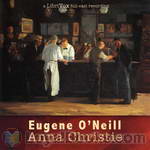 Anna Christie
Anna Christie
Eugene O'Neill's drama Anna Christie was first produced on Broadway in 1921 and received the Pulitzer Prize in 1922. It focuses on three main characters: Chris Christopherson, a Swedish captain of a coal barge and longtime seaman, his daughter Anna, who has grown up separated from her father on a Minnesota farm, and Mat Burke, an Irish stoker who works on steamships. At the beginning of the play Chris and Anna are reunited after fifteen years apart. Anna comes to live on her father's coal barge, but hides the secret of her past from him. When she meets Mat after an accident in the fog, they almost immediately fall in love - but Anna finds that forging a new future will not be easy. | |
 Beyond the Horizon
Beyond the Horizon
Beyond the Horizon is a 1920 play written by American playwright Eugene O'Neill. It was O'Neill's first full-length work, and the winner of the 1920 Pulitzer Prize for Drama. The play focuses on the portrait of a family, and particularly two brothers Andrew and Robert. In the first act of the play, Robert is about to go off to sea with their uncle Dick, a sea captain while Andrew looks forward to marrying his sweetheart Ruth and working on the family farm as he starts a family. | |
By: Euripides (480-406 BC) | |
|---|---|
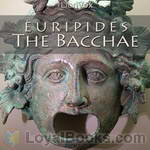 The Bacchae
The Bacchae
This tragedy is based on the mythological story of King Pentheus of Thebes and his mother Agave, and their punishment by the god Dionysus (who is Pentheus' cousin) for refusing to worship him. | |
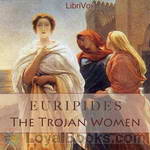 The Trojan Women
The Trojan Women
Euripides' play follows the fates of the women of Troy after their city has been sacked, their husbands killed, and as their remaining families are about to be taken away as slaves. However, it begins first with the gods Athena and Poseidon discussing ways to punish the Greek armies because they condoned Ajax the Lesser for dragging Cassandra away from Athena's temple. What follows shows how much the Trojan women have suffered as their grief is compounded when the Greeks dole out additional deaths and divide their shares of women. | |
 Medea
Medea
Euripides' tragedy focuses on the disintegration of the relationship between Jason, the hero who captured the Golden Fleece, and Medea, the sorceress who returned with him to Corinth and had two sons with him. As the play opens, Jason plans to marry the daughter of King Creon, and the lovesick Medea plots how to take her revenge. | |
By: F. Scott Fitzgerald | |
|---|---|
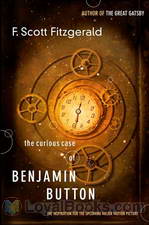 The Curious Case of Benjamin Button
The Curious Case of Benjamin Button
A life lived backwards, with events happening in reverse order forms the strange and unexpected framework of one of F Scott Fitzgerald's rare short stories. The Curious Case of Benjamin Button was published in Collier's in 1927 and the idea came to Fitzgerald apparently from a quote of Mark Twain's in which he regretted that the best part of life came at the beginning and the worst at the end. Fitzgerald's concept of using this notion and turning the normal sequence of life on its head resulted in this delightful, thought provoking fantasy tale... | |
By: Florence Holbrook (1860-1932) | |
|---|---|
 Dramatic Reader for Lower Grades
Dramatic Reader for Lower Grades
Despite the title's bland sounding name, this book is a charming collection of 16 plays for children. These little plays—well-known stories done into dialogue—were written for children who like to imagine themselves living with their favorite characters in forest, in palace, or in fairyland. Included are Cinderella, Robin Hood, William Tell, Hansel and Gretel and many more. | |
By: Frances Browne (1816-1879) | |
|---|---|
 Granny's Wonderful Chair
Granny's Wonderful Chair
Her most famous work, Granny's Wonderful Chair, was published in 1856 and it is still in print to this day. It is a richly imaginative book of fairy stories and has been translated into many languages. This work, read as a child by Frances Hodgson Burnett, inspired the writings of Little Saint Elizabeth and Other Stories | |
By: Frances Moore Brooke (1724-1789) | |
|---|---|
 History of Emily Montague Vol 1 (Dramatic Reading)
History of Emily Montague Vol 1 (Dramatic Reading)
The novel takes place 10 years after the Battle of the Plains of Abraham in 1759 when Quebec becomes a British colony. Written as a collection of letters, the story follows the relationships between Edward Rivers (a British soldier), his friend, John Temple (rather a cad), Emily Montague (a young British woman), and her dearest friend, Arabella Fermor (a flirtatious drama queen). Giving glimpses into the new frontier discoveries of Canada, one not only peeks into the personal relationships of these characters but gets swept away by the enticing descriptions of the "new world." This is Volume 1 out of 4. | |
By: Francis Beaumont (1584-1616) | |
|---|---|
 The Maid's Tragedy
The Maid's Tragedy
Beaumont and Fletcher's The Maid's Tragedy (first published 1619) is a sensational Jacobean sex tragedy. When gentleman soldier Melantius returns to Rhodes, he finds his dear friend Amintor is recently married - but not to his troth-plight love Aspatia (the maid of the title). Instead, the King has arranged a match between Amintor and Melantius' sister, the beautiful Evadne. On his wedding night, Amintor finds that his new wife has married him under false pretenses - and this unleashes a torrent of dire consequences, sexual, emotional, and ultimately political. | |
By: Francis William Bourdillon (1852-1921) | |
|---|---|
 Lost God
Lost God
The first-century scholar and historian Plutarch tells a strange tale of sailors at sea, who heard a mysterious voice proclaiming: "Pan is dead." This narrative poem tells the story of another Greek who sees the funeral of Pan in a vision and is launched on a quest to find the meaning of his vision. His journey eventually leads him all the way to Jerusalem and back, before he finds the answer he is searching for. - Summary by Devorah AllenLeander: MozartjrHelen: Krista ZaleskiPhilo: Larry WilsonPasserby: Kerry AdamsNarrator: Devorah Allen | |
By: Frank Wedekind | |
|---|---|
 The Awakening of Spring
The Awakening of Spring
The Awakening of Spring is the German dramatist Frank Wedekind's first major play and a seminal work in the modern history of theatre. It is the source material for the contemporary rock musical Spring Awakening. The play criticises the sexually-oppressive culture of fin de siècle Germany and offers a vivid dramatisation of the erotic fantasies that it breeds. Due to the nature of its content, the play has often been banned. | |
By: Frederick Arnold Kummer (1873-1943) | |
|---|---|
 Film of Fear
Film of Fear
(Written under the pseudonym, Arnold Fredericks.) Ruth Morton is a world-renowned film actress who seems to have it all: youth, beauty, wealth, and a viable career. But she soon becomes the target of a malicious stalker who begins sending her a series of cryptic threats. Dismissed at first, the stalker soon emerges as a legitimate -- and mysterious -- threat. She soon must call for the services of Richard and Grace Duvall, a husband and wife detective team who soon find themselves ensnared in a mystery where everyone soon becomes a target. | |
By: Friedrich Schiller (1759-1805) | |
|---|---|
 Mary Stuart
Mary Stuart
Schiller's tragedy depicts the final days of Mary, Queen of Scots, who has been imprisoned by her cousin, Queen Elizabeth I, because of her potential claim on the English throne. The action of the play revolves around an attempt to rescue Mary from prison and Elizabeth's indecision over whether or not to have her executed. The 1801 translation is by Joseph Mellish, a friend of Schiller's. | |
 Love and Intrigue
Love and Intrigue
Ferdinand is an army major and son of President von Walter, a high-ranking noble in a German duke's court, while Luise Miller is the daughter of a middle-class musician. The couple fall in love with each other, but both their fathers tell them to end their affair. The President instead wants to expand his own influence by marrying Ferdinand to Lady Milford, the duke's mistress, but Ferdinand rebels against his father's plan and tries to persuade Luise to elope with him. | |
 Camp of Wallenstein
Camp of Wallenstein
This is the first play of Friedrich Schiller's Wallenstein Trilogy. Set in a Bohemian camp during the Thirty Years War, it introduces the major characters of the rest of the trilogy, like Albrecht von Wallenstein and Max Piccolomini, from their subordinates' point of view. | |
By: Fyodor Dostoyevsky (1821-1881) | |
|---|---|
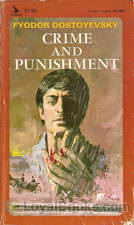 Crime and Punishment
Crime and Punishment
A mysterious crime is being plotted in a tiny garret above a dilapidated apartment building in St Petersburg in Russia. The plotter, Rodion Raskolinikov, is a poor student who has delusions of ridding the world of “worthless vermin” and counter balancing these crimes with good deeds. He commits a murder to test his own theories and prove that crime comes naturally to the human species. Crime and Punishment is a path-breaking novel of ideas that changed the course of novel writing in the 20th century... | |
By: George Bernard Shaw (1856-1950) | |
|---|---|
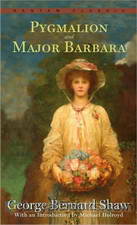 Pygmalion
Pygmalion
If you've watched and loved the delightful musical My Fair Lady, then you'd love to read the wonderful play on which it is based. Pygmalion by George Bernard Shaw is equally engrossing and as full of charm, wit and underlying pathos. First performed on stage in 1912, Pygmalion takes its title from the Greek myth of Pygmalion and Galatea. In the ancient story, a brilliant sculptor, Pygmalion falls in love with one of his own creations, a ravishingly beautiful sculpture whom he names Galatea. He propitiates Aphrodite, who grants his wish that his statue would come to life and that he could marry her... | |
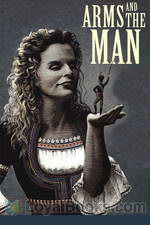 Arms and the Man
Arms and the Man
Arms and the Man is a comedy by George Bernard Shaw that takes place in 1885, during the Serbo-Bulgarian War. Raina Petkoff is engaged to the gallant Sergius Saranoff, hero of the recent Bulgarian victory over the Serbs. But she is distracted by the abrupt arrival of Captain Bluntschli, a Swiss mercenary who fought for the Serbian army. He takes refuge in her bedroom after the battle and although he is initially threatening, reveals that he carries chocolates instead of bullets. Will Raina marry the posturing Sergius or the chocolate cream soldier? Extra intrigue is provided by saucy servant girl Louka, her dour fiance Nicola, and Raina's hand-wringing parents. | |
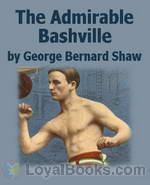 The Admirable Bashville
The Admirable Bashville
The Admirable Bashville is a product of the British law of copyright. As that law stands at present, the first person who patches up a stage version of a novel, however worthless and absurd that version may be, and has it read by himself and a few confederates to another confederate who has paid for admission in a hall licensed for theatrical performances, secures the stage rights of that novel, even as against the author himself; and the author must buy him out before he can touch his own work for the purposes of the stage... | |
 Mrs. Warren's Profession
Mrs. Warren's Profession
The story centers on the relationship between Mrs Kitty Warren, a rich woman, described by the author as "on the whole, a genial and fairly presentable old blackguard of a woman" and her daughter, Vivie. Mrs Warren is a middle-aged woman whose Cambridge-educated daughter, Vivie, is horrified to discover the morally questionable way her mother acquired her fortune. | |
 The Doctor's Dilemma
The Doctor's Dilemma
The Doctor's Dilemma is about Dr. Colenso Ridgeon, who has recently been knighted because of a miraculous new treatment he developed for tuberculosis. As his friends arrive to congratulate him on his success, he is visited by two figures who present him with a difficult decision. He has room for one more patient in his clinic; should he give it to Louis Dubedat, a brilliant but absolutely immoral artist, or Dr. Blenkinsop, a poor and rather ordinary physician who is a truly good person? Dr. Ridgeon's dilemma is heightened when he falls for Jennifer Dubedat, the artist's wife, who is innocent of her husband's profligacy. | |
 Candida
Candida
Candida, a comedy by playwright George Bernard Shaw, was first published in 1898, as part of his Plays Pleasant. The central characters are clergyman James Morell, his wife Candida and a youthful poet, Eugene Marchbanks, who tries to win Candida's affections. The play questions Victorian notions of love and marriage, asking what a woman really desires from her husband. The cleric is a Fabian Socialist, allowing Shaw—himself a Fabian—to weave political issues, current at the time, into the story. | |
 Major Barbara
Major Barbara
George Bernard Shaw's Major Barbara focuses on the family of aristocratic Lady Britomart Undershaft and her estranged husband Andrew, a millionaire armaments manufacturer. Their daughters Sarah and Barbara are both engaged to be married, and Lady Britomart decides to ask Andrew for monetary support. Barbara is a Major in the Salvation Army, and agrees to let her father visit the mission in the East End of London where she works. In exchange, she agrees to visit his munitions factory. The conflict between Barbara's philanthropic idealism and her father's hard-headed capitalism clash when he decides he wants to fund the Salvation Army... | |
 Caesar and Cleopatra
Caesar and Cleopatra
| |
 Saint Joan: Preface
Saint Joan: Preface
Saint Joan is a play by George Bernard Shaw about 15th-century French military figure Joan of Arc. Premiering in 1923, three years after her canonization by the Roman Catholic Church, the play reflects Shaw's belief that the people involved in Joan's trial acted according to what they thought was right. He wrote in his preface to the play: “There are no villains in the piece. Crime, like disease, is not interesting: it is something to be done away with by general consent, and that is all [there is] about it... | |
By: George Henry Lewes (1817-1878) | |
|---|---|
 Noble Heart
Noble Heart
This Victorian melodrama, written by G.H. Lewes, common law husband of novelist George Eliot , featured a scandalous love triangle. The scene is set in 16th century Spain. The main character is Don Gomez del la Vega, a nobleman in service of his king battling the Moors. In the midst of a campaign, he and his son, the gallant knight, Don Leon, both fall in love with the beautiful Juanna, daughter of a merchant, who had pledged her hand in marriage to Don Gomez. How can the situation be resolved... | |
By: George MacDonald | |
|---|---|
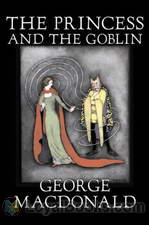 The Princess and the Goblin
The Princess and the Goblin
George MacDonald’s fairy stories and fantasy have inspired a number of writers including C.S. Lewis and J.R.R. Tolkien and of this popular fairy story, which as you might suspect concerns a little princess plotted against by a race of goblins, G.K. Chesterton said that it “made a difference to my whole existence.” | |
By: Gordon Bottomley (1874-1948) | |
|---|---|
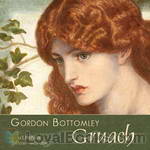 Gruach
Gruach
Gordon Bottomley's verse drama in two scenes is a prequel to Shakespeare's Macbeth. He provides Lady Macbeth with a name - Gruach - and imagines her family life and how she meets Macbeth. | |
By: Gotthold Ephraim Lessing (1729-1781) | |
|---|---|
 Miss Sara Sampson
Miss Sara Sampson
G.E. Lessing, widely regarded by students of theater as the world's first dramaturg, was also one of the first proponents of the German bourgeois tragedy. Miss Sara Sampson, in which a young woman runs off with a ne'er-do-well who is still entangled with his former mistress, was a reaction against the Voltarian verse drama popular in the eighteenth century. | |
By: Gregorio Martínez Sierra (1881-1947) | |
|---|---|
 Cradle Song
Cradle Song
"In 1911 [Martinez Sierra and his wife/co-author Maria] achieved a definitive and permanent triumph with the production of The Cradle Song.... The Cradle Song is a reminiscence of Maria's youth in Carabanchel, a town in which her father was convent doctor and where her sister took the veil, the Sister Joanna of the Cross of the play. [Martinez] has paused to probe some universal passion or emotion... in The Cradle Song, to echo the cry of the eternal mother instinct while has been stifled and denied... | |
By: Harry Clifford Fulton | |
|---|---|
 Jean Valjean; or, The Shadow of the Law
Jean Valjean; or, The Shadow of the Law
A late 19th-century stage adaptation of Victor Hugo's Les Miserables in English, The Shadow of the Law dramatizes the struggles of Hugo's legendary characters: Jean Valjean, the former convict; his relentless pursuer, Javert; Fantine, the tragic mother; her daughter Cosette; the greedy Thenardiers; the doomed revolutionaries. | |
By: Henrik Ibsen | |
|---|---|
 A Doll's House
A Doll's House
Nineteenth century attitudes towards marriage, the role of women, morality and the search for identity are brilliantly explored in Henrik Ibsen's three act play, A Doll's House. It was highly controversial and received with a sense of outrage among opinion leaders in Europe. Many thinkers like August Strindberg lashed out at Ibsen for portraying the sacred institution of marriage in such a derogatory way. A Doll's House, written in the original Danish, was first performed at the Royal Theater in Copenhagen in 1879... | |
 The Master Builder
The Master Builder
Henrik Ibsen's The Master Builder, first published in 1892, is about architect Halvard Solness, who despite personal tragedy (including the death of his two sons) has risen to the top of his profession. He has succeeded partly through ruthless competition and exploitation and partly through a seeming ability to force his will on others. His unhappy wife Aline mourns for their lost life, and resents his interest in various young women, including his bookkeeper Kaia Fosli. Solness disregards the ambitions of other architects, including Knut Brovik and his son Ragnar, and seeks solace in the advice of family physician and friend Dr... | |